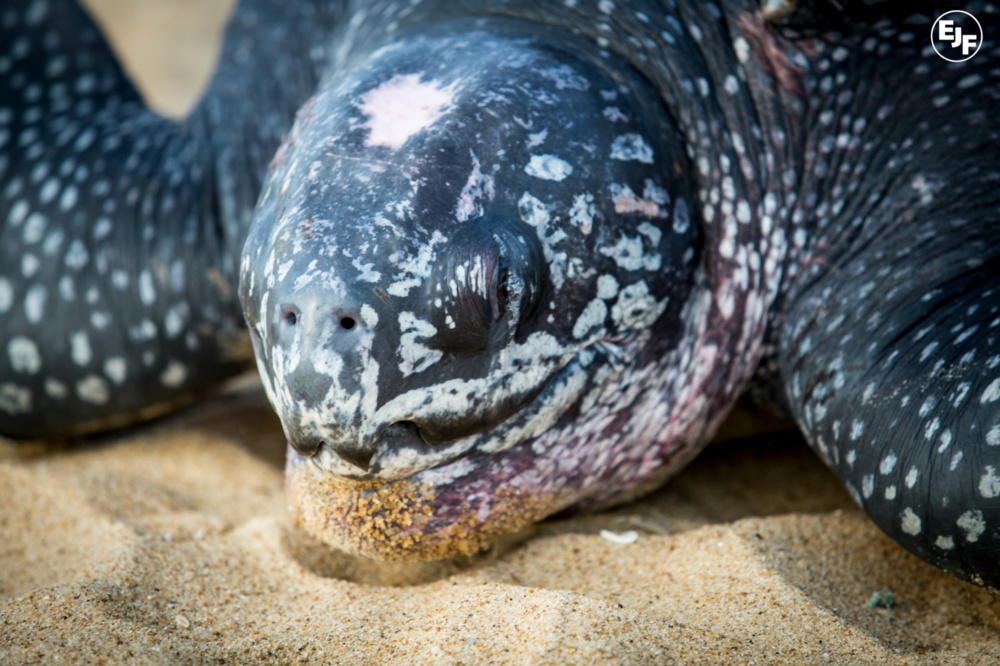
Notes from the field: turtle conservation up close
Last week I returned from an EJF trip to Ghana, where I went to seek out and film the increasingly rare sea turtles that swim hundreds of miles every year to lay their eggs on the sandy beaches of West Africa.
Six species of sea turtle once nested on Ghana’s beaches. Sadly only three remain. The largest of these, the leatherback turtle, is critically endangered in the region.
It takes around 20 to 30 years for female leatherbacks to reach sexual maturity. At this point they swim back to the area they were born, haul themselves up along the beach and lay clutches of around 100 eggs.
Just 1 in 1000 of these will survive to adulthood.
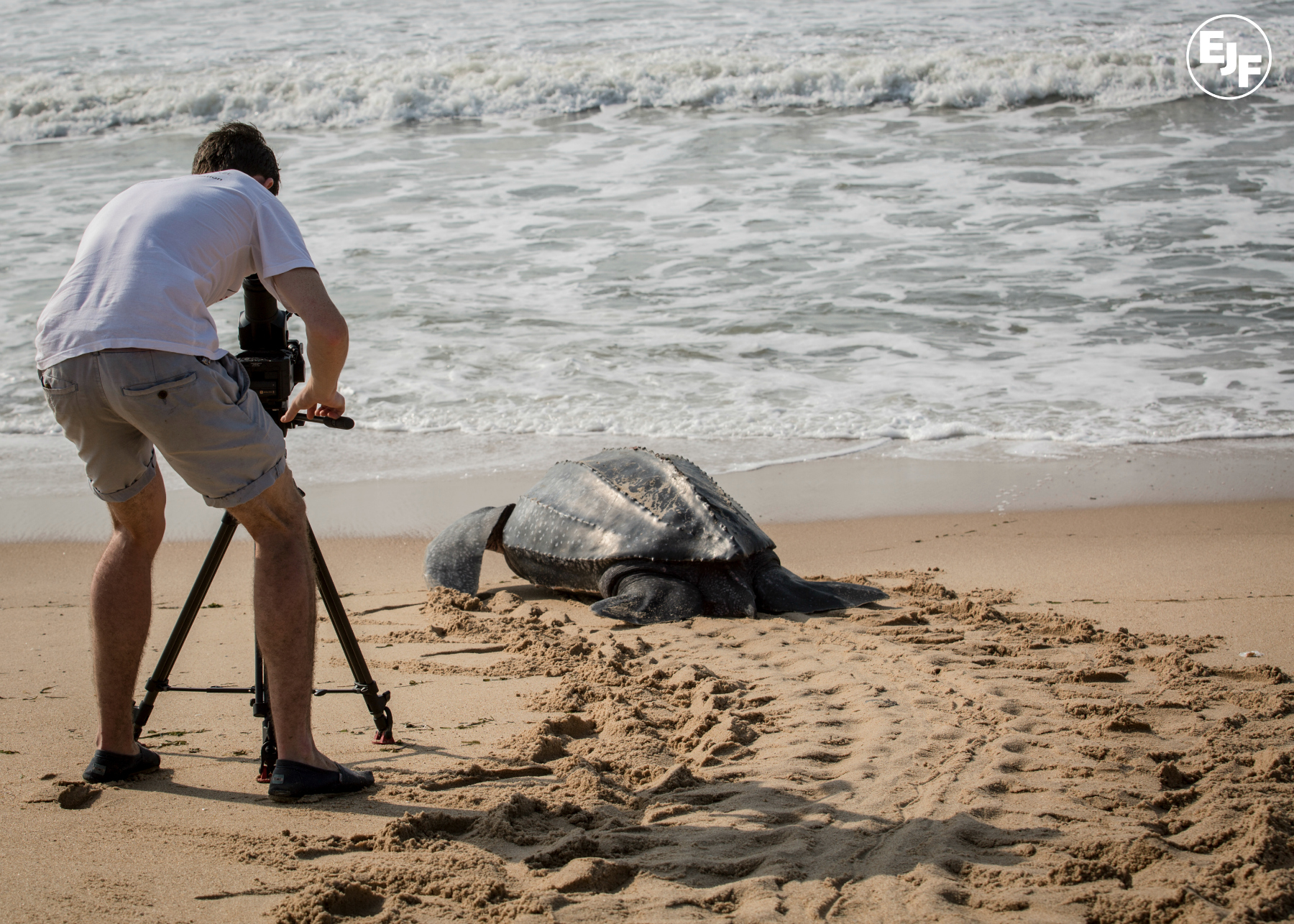
The biggest threat to turtles at nesting time comes from human activity.
In Ghana, leatherbacks and other marine turtles are in constant danger of being caught and killed by illegal poachers, and sold for food along with their eggs.
The sheer size of female leatherback turtles (they can weigh over 700kg) means that they can’t easily be captured or killed. Poachers will often disable large turtles by hacking their fins with machetes to prevent them from escaping. The turtles are then restrained with rope and dragged away from the beach for butchering.
This grim trade in vulnerable nesting turtles is fuelled by declining fish stocks. Overfishing and illegal ‘pirate’ fishing are destroying the fish populations that coastal communities rely on for food and income.
For this reason, EJF is working to document and expose illegal fishing activities and ensure that Ghana’s fishing grounds are sustainably managed.
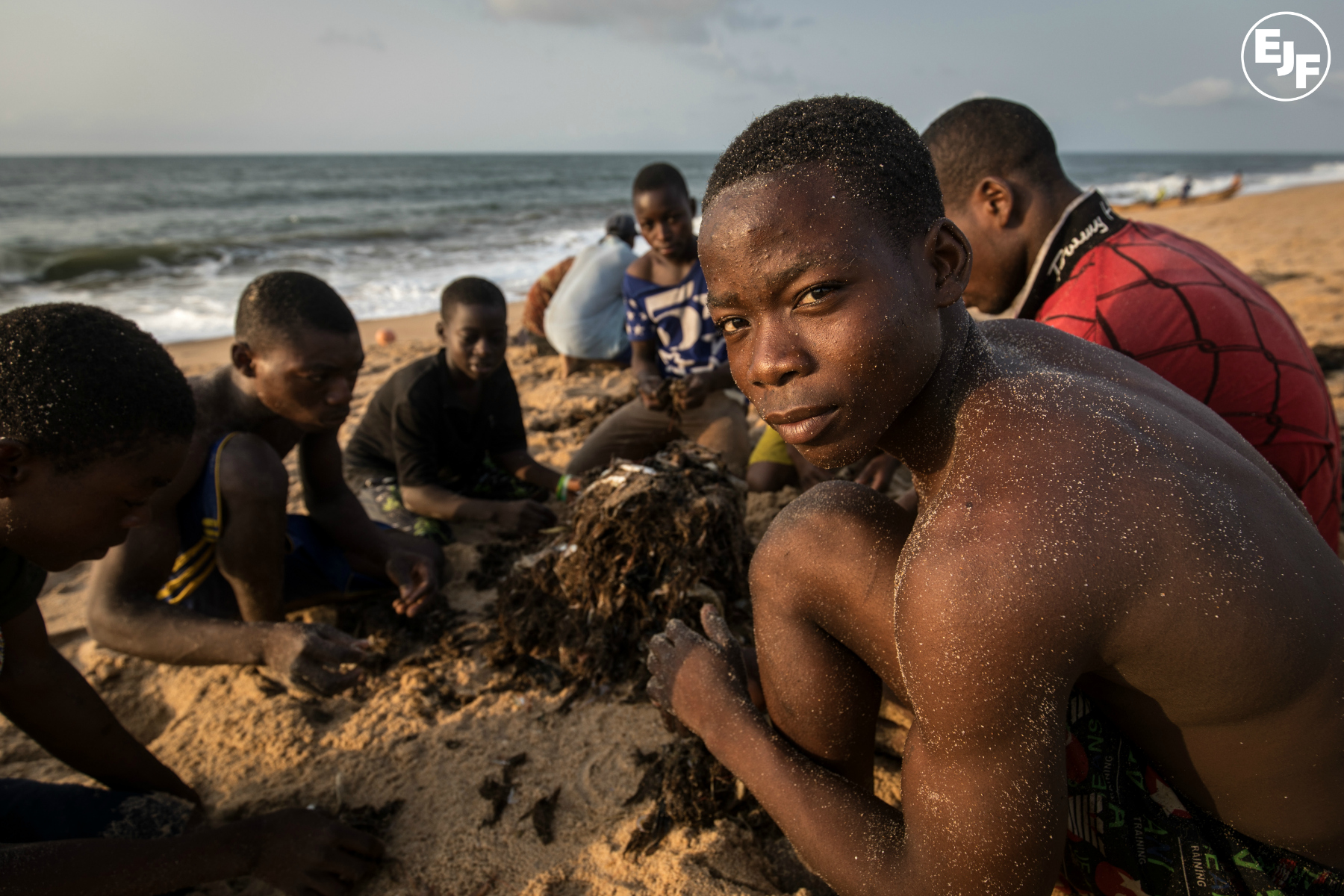
During my trip to Ghana, I was able to help out first hand with the implementation of EJF’s new turtle conservation project in the Volta region.
It was vital that all relevant stakeholders - from fishermen, fish smokers and community leaders to hotel owners, law enforcement personnel and local government – were enthusiastically engaged in the project.
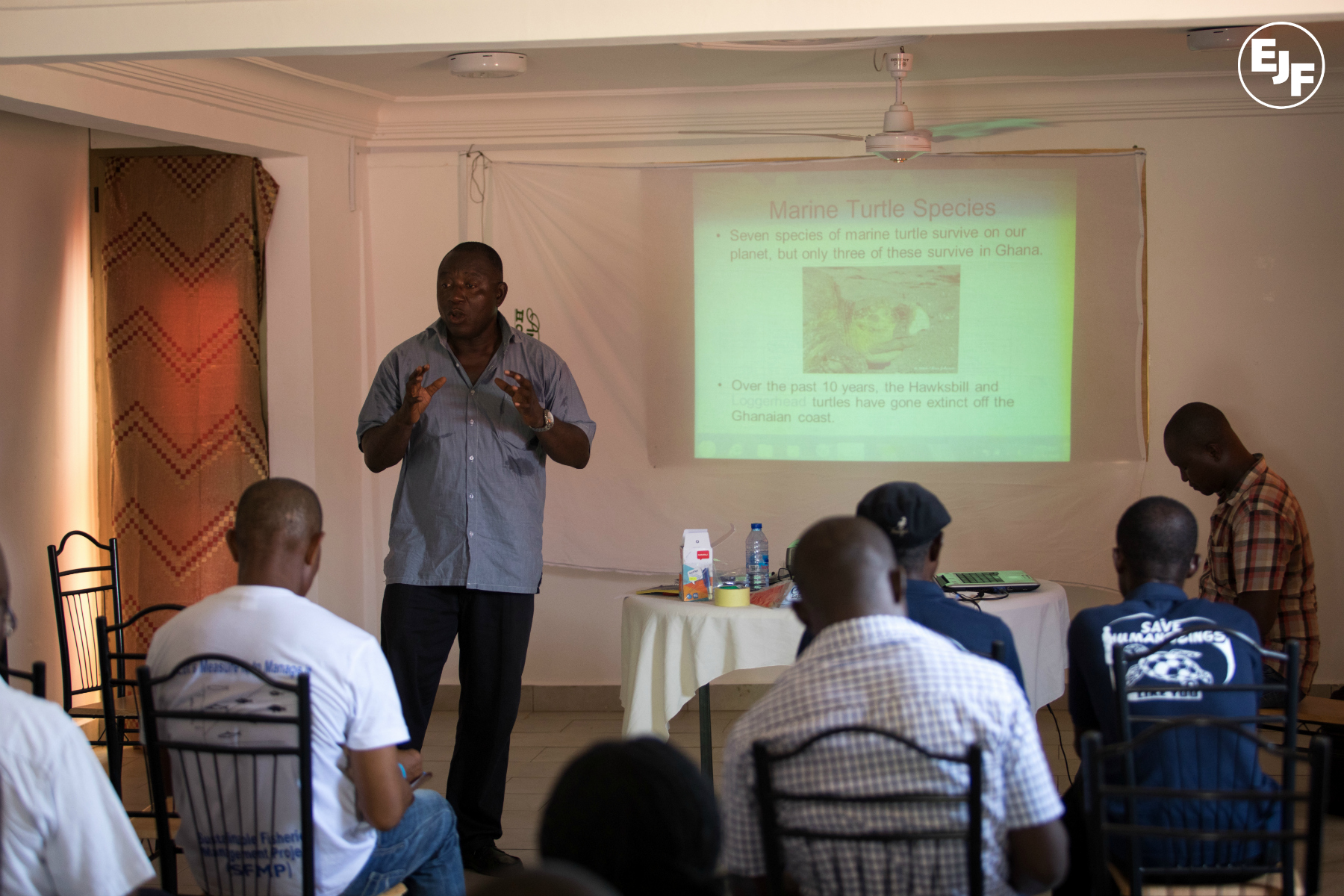
Every night the volunteers set out to vigilantly patrol the beach, rescuing as many turtles as they can during their most vulnerable time, and reporting poaching and illegal fishing to the authorities.
We arranged a workshop to bring these groups together to discuss how best to move forward and work with each other to protect future generations of marine turtles.
Many young people in the area have never seen a turtle on the beaches where they live and work. That’s how rare they have become.
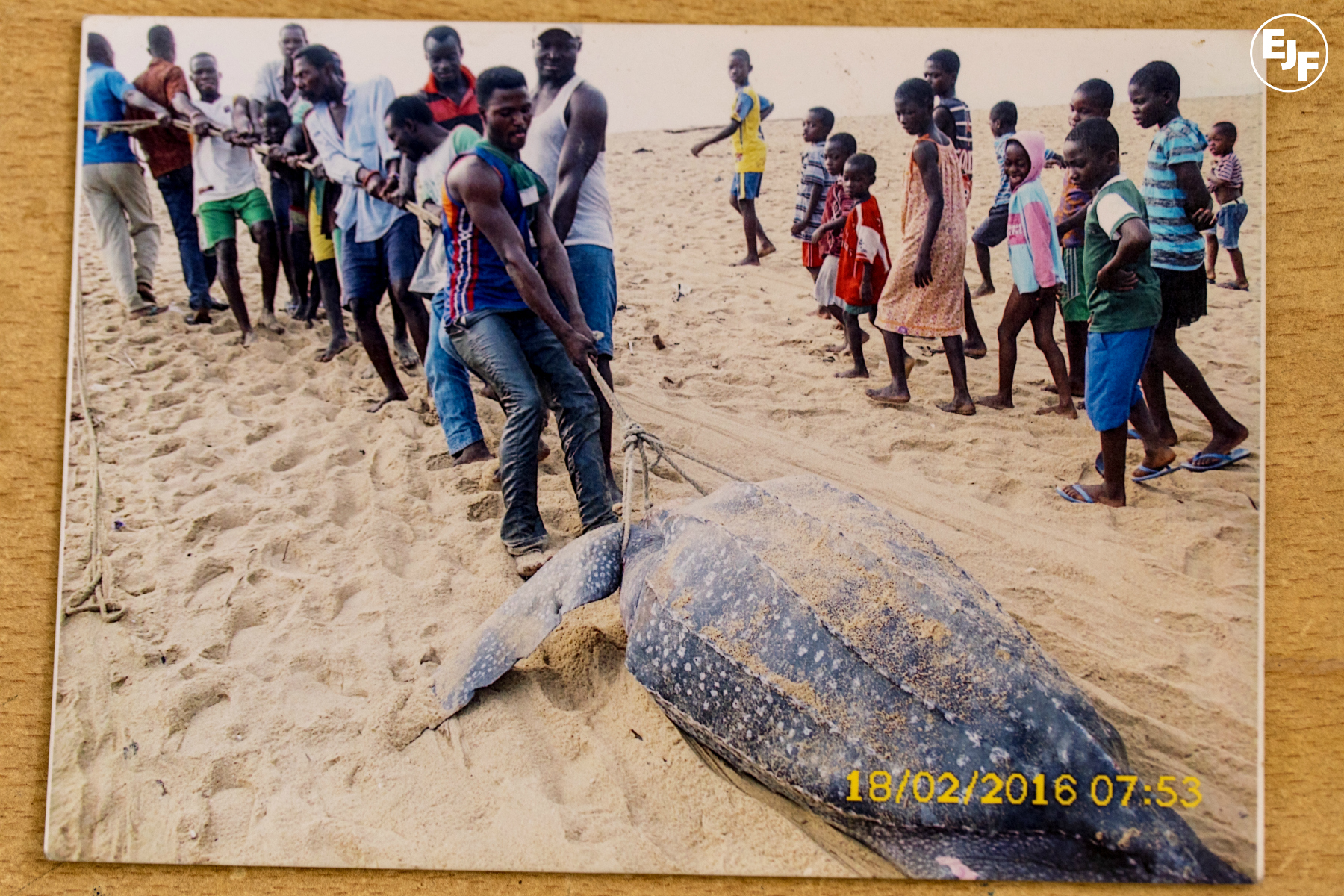
Their commitment to conserving future generations of these creatures is truly inspiring.
I’m optimistic that the care of local communities and EJF project leads, and our shared desire to protect these magnificent animals, will have an impact and save their numbers from declining further.
SIGN UP FOR OUR EMAILS AND STAY UP TO DATE WITH EJF